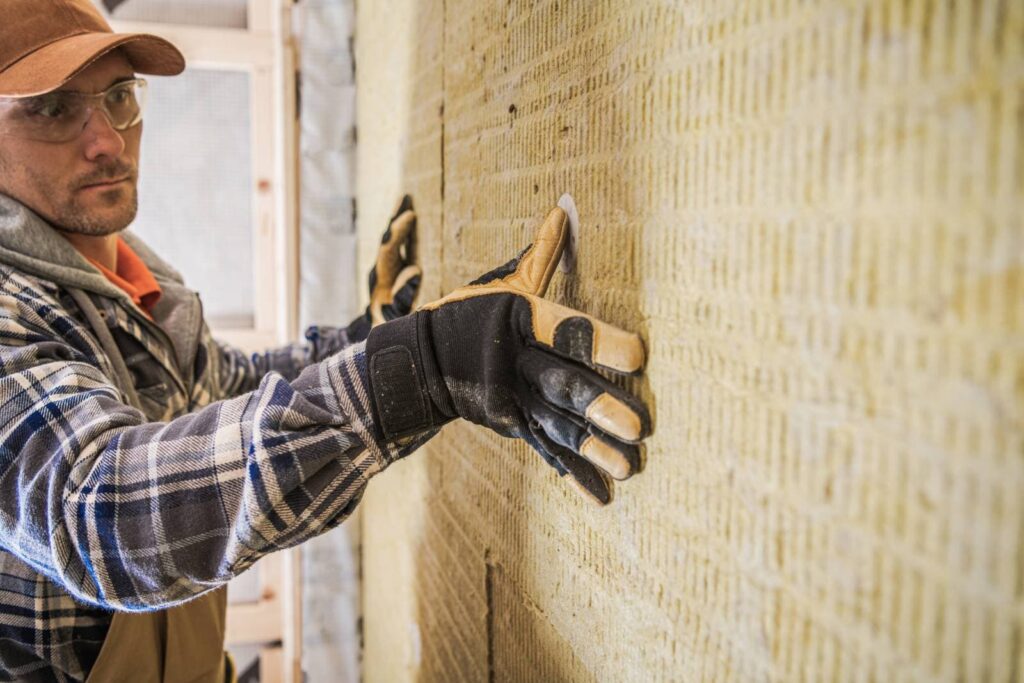How to Install a Radiant Barrier and Why You Should
We all want to live a little greener, reduce our carbon footprint, and save money on energy bills. One of the best ways to make your home or place of business more environmentally friendly is to add a radiant barrier to your attic or crawl space.
But what does it do? How do you install a radiant barrier, and how much can you expect to save on your energy bill? Keep reading to find out.
What is a Radiant Barrier and What Does It Do?
Radiant heat is heat that is absorbed without contacting an object. Materials that absorb radiant heat will eventually transfer it to the surrounding area.
Where you park your car is a good example of how radiant heat works. When your car is in full view of the sun, the interior gets extremely hot, much hotter than the ambient outside temperature. It does this because the materials inside the car absorb the heat before radiating it back out to the already warm interior.
The same principle is at work inside your attic or crawlspace. Radiant heat builds up in your roofing material. While up to half of it will be reflected into the atmosphere, a lot of it will make its way inside your roof cavity where it is absorbed by the insulation, the wooden trusses, ac ductwork, and whatever else you have stored up there. Even with insulation, some stored heat will enter your living space.
Radiant barriers work by reflecting more heat back into space by adding a reflective layer (usually foil). It won’t reflect all the heat, but it can reduce the temperature of your roof cavity interior from 160 o down to a more tolerable 100 o. That’s a significant difference that you will notice inside your home and on your energy bill. The Department of Energy states that a high-quality, professionally installed radiant barrier can reduce energy bills by 5 to 10 percent.
Insulation on Its Own is Not Enough
Insulation is essential to creating a more comfortable, energy-efficient home, but it’s not enough to protect your interior from rising radiant heat levels. If you don’t have insulation, it should be the next thing you do before adding radiant barrier products.
The type of insulation you need will depend on your location. The Greater Bay Area is mostly zone 3, which recommends R30 to R60 for an uninsulated attic, or an extra 3–4-inch layer of R25 to R38 rated insulation.
Insulation will eventually absorb and transfer heat. It’s thermodynamics, and there’s nothing you can do to prevent it. Laying a radiant barrier on the underside of the roof reduces the amount of radiant heat your insulation will absorb.
Your home will be more comfortable when your insulation is cooler. You’ll also give your AC a break and be able to turn the thermostat up a notch or two to save on cooling costs.
How to Install a Radiant Barrier
What’s inside your attic and your goals will determine the best way to install a radiant barrier. The two most common methods include stapling foil to the bottom of the rafters or laying it over the existing insulation.
You will also need to decide on the best installation method depending on your climate. People living in warmer climates who want to reduce their cooling expenses should install the radiant barrier at the bottom of the rafters. Homes in cooler climates will be better off laying the radiant barrier on top of existing insulation.
Hybrid Methods for Installing Radiant Barrier Foil
Radiant barriers can provide year-round benefits when you use the correct installation method for your property and are easy to install.
The attic radiant barrier will work most efficiently when it is perpendicular to the radiant heat that it is reflecting. Also, the benefits of a radiant barrier increase as the temperature difference between its sides increases. The following methods can be used depending on how you use your attic.
Open-Ridge Method
Properties where the attic space is used for storage or has ducts running through it will benefit most from an open-ridge radiant barrier installation, regardless of the climate in your area. You will notice an added benefit when you install a radiant barrier in an attic that has ductwork running through it.
The radiant heat gain of the metal work will be significantly reduced. The cool air running through the ducts won’t absorb as much radiant energy as the hot air, so your AC won’t have to work as hard.
Over-Insulation Method
A property that has nothing in the attic other than regular insulation should lay radiant barrier foil insulation over the attic floor using the over-insulation method rather than staple the foil to the attic rafters.
This strategy doesn’t reduce the heat buildup in the attic airspace, but it does reflect it back up to reduce heat flow into the living areas below. The insulation below the foil is kept cooler in summer. In winter, the reflective barrier also keeps warmth from the house from escaping through the top layer of insulation.
Flat-Top Method
The flat-top method is the most efficient for tall attics that are 8 feet or higher with a steep roof pitch. Instead of needing a ladder in the attic to reach the top of the ceiling, you start at the bottom and staple the radiant barrier up to as high as you can comfortably reach. You then stretch it across to the other side, which creates a flat top, and continue down to the bottom of the roof.
Most people will choose one installation method rather than a hybrid strategy because it’s straightforward and cheaper. However, weather patterns are no longer as predictable as they used to be, so we recommend installing a radiant barrier in your attic using one of the hybrid methods for reducing heat transfer.
More Attic Radiant Barrier Tips
Adding a radiant barrier to the attic floor will create a cooler attic. It’s a relatively simple solution that uses less material, but it’s not the most effective method if you have a small or crowded attic. If your home’s attic space is cluttered or hard to get into, stapling radiant barrier material to the roof rafters could be all but impossible.
A radiant barrier should not be your only form of insulation. Make sure you have enough by checking with the DOE (Department of Energy) for a recommended level of insulation where you live.
Radiant barrier material is perforated but not designed as a vapor barrier. You will need to check your roof for air leaks, as too much moisture condensate could create problems like a mold outbreak.
Understanding roof and attic ventilation is straightforward. Holes in the top of the roof are called exhaust vents. Holes in the bottom are referred to as soffits or eves. Gable vents are like permanently opened louvered windows installed at each end of the roof underneath the eaves to ensure proper air flow through the attic and improve heat loss.
It’s recommended to have a ridge or gable vent installed if you don’t have one. Make sure any existing vent systems are not blocked by roofing and check the soffit vents to make sure you haven’t installed radiant barrier material over them.
If you would like to benefit from a cooler, more efficient home, consider upgrading your attic insulation with a radiant barrier. If you are not sure what method or material to use, call the professionals at Attics Pro, Inc., where you will receive professional service and expert advice.

